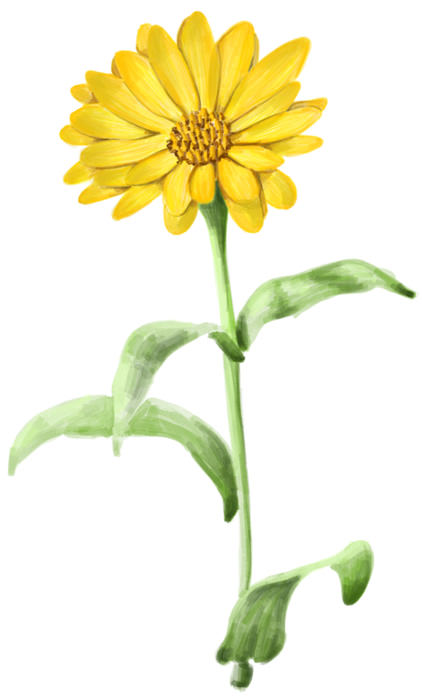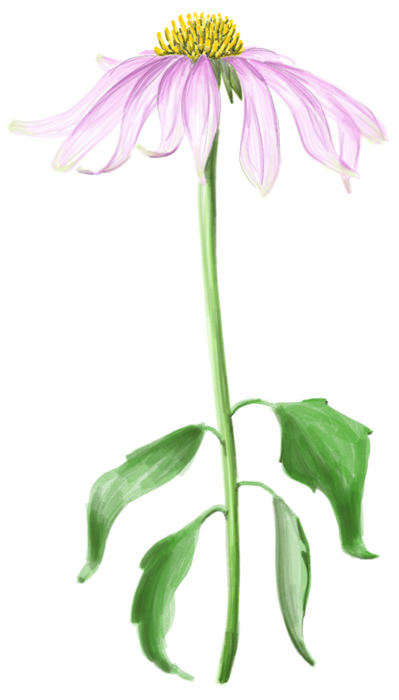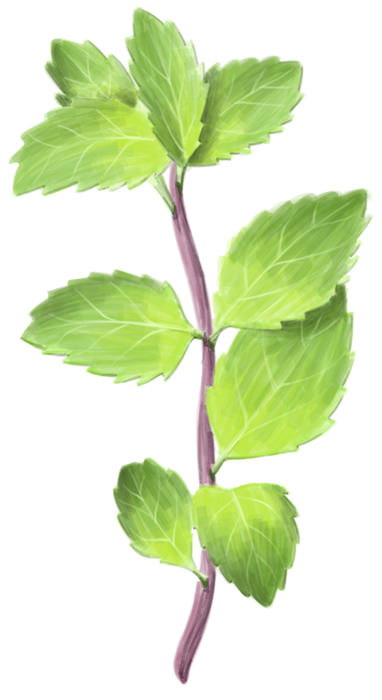edible garden
STEEPED IN LOCAL FLAVORS
Northern Nevada offers a ripe climate for growing an herbal tea garden.
WRITTEN BY ANNIE FLANZRAICH
ILLUSTRATIONS BY REED DEWINTER
On a chilly morning, few experiences are more soothing than curling up with a cup of herbal tea and savoring each sip.
And just think how much better that moment would be if the herbs were to come from your own backyard or even indoor containers.
Growing ingredients for herbal tea, also called tisane, isn’t too difficult in Northern Nevada. The area’s warm, dry climate is perfect for growing herbs, says Lisa Braginton, a horticulturist at Moana Nursery in Reno.
“There are so many ways our weather works against us, but in the case of herbs, it’s quite conducive,” Braginton says.
Many of the plants used in tisanes, such as lemon balm, mint, or calendula, may even already grow in some gardens.
“Most people don’t realize that many herbs are weeds,” says Katie Callahan, a registered nurse and herbalist who owns Remedies, an herb shop in Midtown Reno.
What to grow
Some versatile and area-appropriate plants to grow include:
Mint
With a wide variety of flavors and a weed-like nature, mint can be an easy base for herbal tea. Some popular varieties include apple, orange, and chocolate mint. But be wary of mint’s overbearing nature, Braginton says. Plant it in a separate container and keep the roots away from the rest of your garden.
Lemon balm
While lemon verbena is a common herb in many teas, the plant can be difficult to cultivate in Northern Nevada. Braginton suggests instead trying lemon balm, which grows more easily but still offers a citrusy, herbal flavor. As a member of the mint family, lemon balm also spreads prodigiously, so exercise the same caution and plant it in a separate container.
Calendula
Your garden may already include these cheery blossoms (also known as pot marigolds), which can be added to teas for a woody, earthy, and slightly sweet taste.

Echinacea
Another common garden flower, echinacea (also known as the purple coneflower), can be used to make herbal teas. During the growing season, this flower may help pollinate the garden. In tea, it adds a floral taste and aroma.

Lavender
Another popular perennial, lavender is a commonly used herbal tea ingredient noted for its soothing flavor and aroma. If you plan to purchase a flowering plant for tea, make sure to select it from the edible section of a shop, says Wendy Hanson Mazet, coordinator of the UNCE Master Gardener Program in Washoe and Douglas counties.

How to harvest and brew
You can brew herbal tea from fresh or dried plants. In either instance, it’s best to collect the plants at the day’s highest dew point, Hanson Mazet says.
“That’s when you’re going to have the highest oil content in your leaves,” she says.
Once you’ve harvested your ingredients, then the fun of blending begins.
“I like to blend to taste and function,” says Promilla Mohan, director of Davidson’s Organics Teas, Herbs, Cocoa & Spices. “For instance, if you aim to create a relaxing, sleepy-time blend, then you likely would choose chamomile and lavender as a base.”
A tea serving usually is comprised of two grams of ingredients, so a scale can be helpful, Mohan says. She suggests creating a blend based on percentages — for example, 40 percent chamomile, 30 percent lavender, and 30 percent mint.
“That way, if I prefer my serving to be stronger than the typical two grams, I still have an understanding of the ratio of flavor,” she says.
No matter what the blend, growing your herbal teas can be a rewarding experience, Hanson Mazet says.
“It’s really nice to be able to go out into your own yard (or indoor containers) and pick the herbs and ingredients you want to brew tea with,” Hanson Mazet says.
Annie Flanzraich is a freelance writer and editor who prefers to start her winter days with a cup of mint tea.


